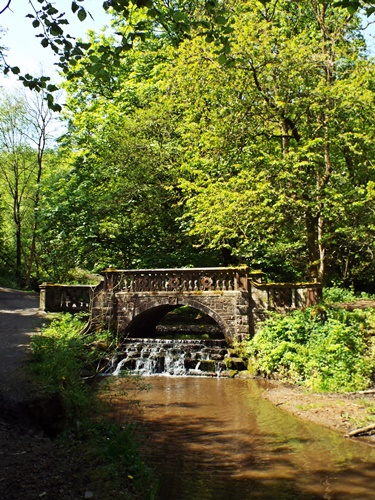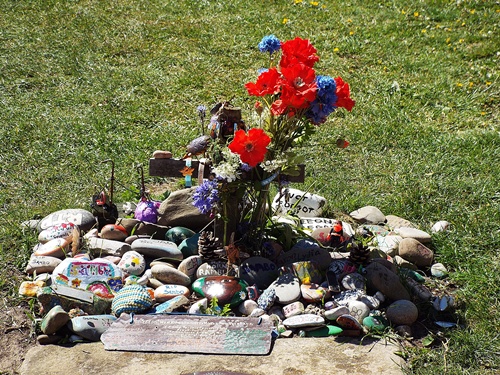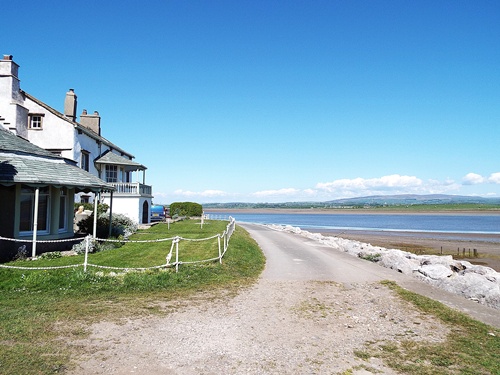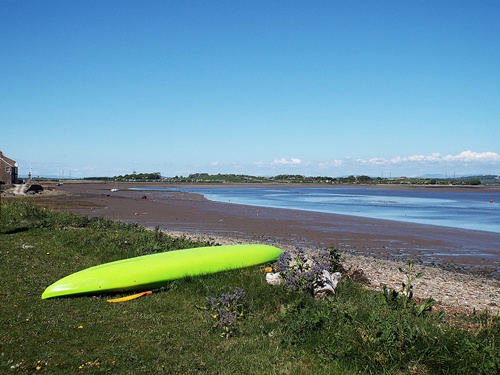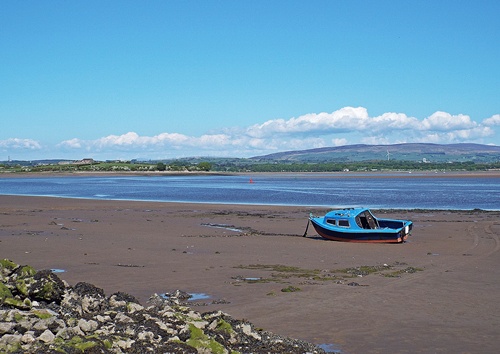Well here we are at the end of May and the scavenger photo hunt has come round once again, with this month’s topics being – seat, view (from the seat), lunch, starts with ‘P’, transport, and my own choice. It’s been a difficult one for me this month – not because of the topics but because I suffered a major computer failure earlier in the month and was without a decent pc for over two weeks. Working on a borrowed laptop was okay up to a point but downloading and editing photos was a no-no so I thought I may have to give this month’s photo hunt a miss. However I finally got a new-to-me pc last week though I’ve had to find my way round Windows 10 which hasn’t been easy (and still isn’t!) but through trial and error I’ve managed to sort out some photos for the challenge so here goes.
I’m cheating a bit with the first and second topics as the photo I’ve chosen covers both. Back in the early to mid 90s, while on regular holidays in Norfolk, some friends of ours would often take us out on the Broads in their boat and one of the places we sometimes passed was the ruins of St. Benets Abbey on the River Bure. Somehow I never got the chance to actually go there but fast forward to just three years ago and while on my solo travels with the dogs I finally got that chance, although it wasn’t the easiest of places to find and get to by road. The ruins are quite fascinating and behind them a path leads to the riverside staithe and the seat which has a good view over the staithe itself, the river and the nearby fields – it’s very peaceful and makes a lovely spot to sit and watch the boats go by.

The next topic was supposed to be a Sunday lunch but due to Michael working his day off it turned into Sunday tea, or dinner for those who want to be ‘posh’. We often go out for a meal on Sundays and our usual ‘go to’ eaterie is a pub just three miles up the road from home, however a couple of weekends back we decided to ring the changes and go to our local Toby Carvery which is also near home. Although I just had a normal meal Michael ‘went large’ and came back to the table with an absolute plateful – he’d said he was hungry after having just worked a 12-hour shift but I didn’t expect him to get that lot!

The next category had me thinking for a while ; the obvious one was a photo of Poppie but I’ve used one of her before, however inspiration struck as I was driving to work the other morning – pigs! As soon as I got to work I wrote it on the back of my hand as a reminder – of course I got more than one person asking why I had PIGS!! written on my hand – then once I was back home again I searched my photo archives for an appropriate photo. I had the choice of several but finally went with this one – a little piglet at the North Wales camp site I stayed at a couple of years ago. He was adorable and I so much wanted to bring him home.

The next subject is so unusual I feel it deserves three photos rather than one, and though it couldn’t be used as transport in the general sense of the word it was used for transporting things. My last partner was very clever when it came to dealing with anything mechanical – he was brought up on a farm in Suffolk and had been tinkering with farm machinery and cars from being quite young – and though we owned and ran full-sized vintage tractors he wanted something smaller which he could use at work and which could pull a heavy weight. A normal ride-on mower/garden tractor wouldn’t do so he designed and built his own out of any spare bits and pieces he had or could find in various places – he called it the A S P (All Spare Parts) and though it wasn’t the prettiest looking machine it did exactly what he wanted it to do.
The various parts he used to build this machine are far too many to list but here’s a few – the seat came from a café, the steering wheel off a go-cart, the bonnet was made from the side of an old washing machine, engine from a Honda C90 motorbike, steering mechanism an old Transit window winding device, hydraulics were a 2-ton trolley jack and the bull-bars at the front were from an Asda shopping trolley fished out of a local canal. Oh, and he also pinched some of my weights to use as counterbalance for heavy loads. We actually exhibited the tractor at several agricultural and tractor shows and it became quite a talking point more than once.

And finally, from the ridiculously practical to the ridiculously cute. Back in early 2009 I took in a female cat which wasn’t being cared for properly ; the cat was pregnant and eventually gave birth to three kittens. Sadly two of them died soon after birth and though she looked after the third one he became quite ill after a few weeks. Several trips to the vet’s followed and Weeble, as I called him, had to be kept separate from my other cats so he was housed in a large pen. That was okay to start with but once he had recovered sufficiently he would climb up the sides in an effort to get out, and more by sheer good luck than anything else I managed to snap a photo of him on one of those occasions. He eventually grew from a tiny little scrap into a big beautiful cat but sadly I lost him four years later when he became the road victim of a boy racer.
Weeble’s one claim to fame though when he was tiny is that he was once held and cuddled by Helen Flanagan who played Rosie Webster in Coronation Street. I had just come out of the vet’s with him wrapped in a soft towel when I saw Helen just about to get in her car which was parked round the corner – her face lit up when she saw Weeble and she asked if she could hold him. I spent about ten minutes sitting in her car chatting to her while she cuddled him and she thanked me afterwards for letting her hold him.







































